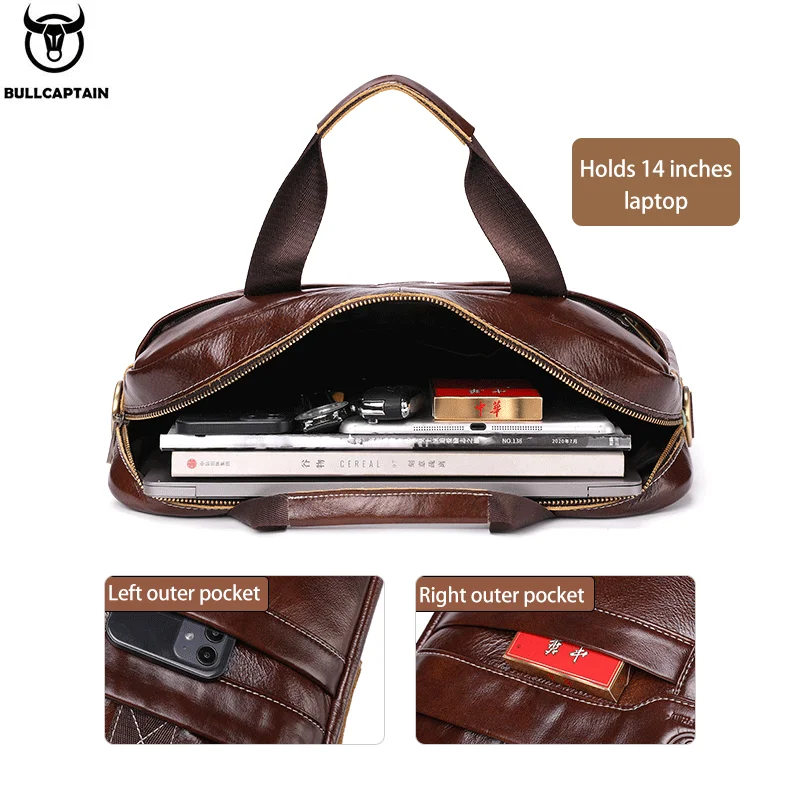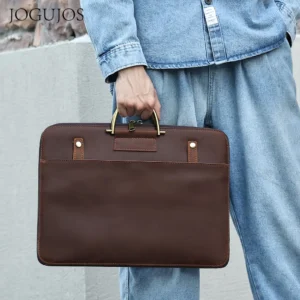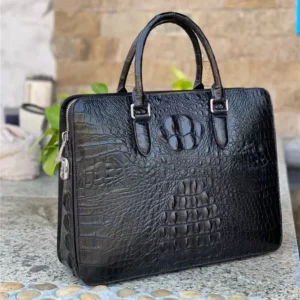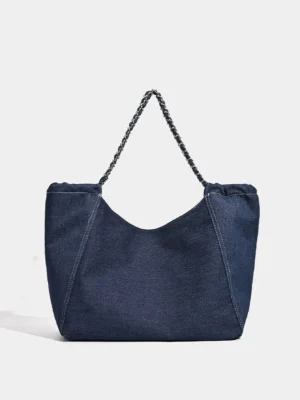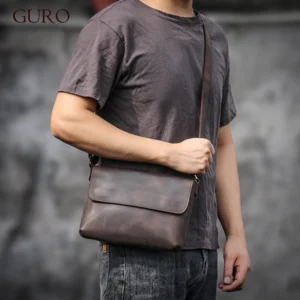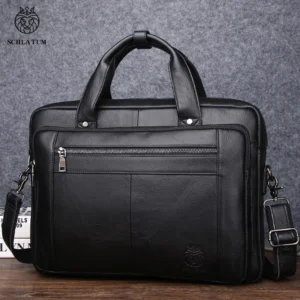The Evolution of the Briefcase: From Historical Necessity to Modern Status Symbol
The humble briefcase has a rich history that stretches back centuries. The term “briefcase” itself reveals its origins – derived from the legal documents called “briefs” that lawyers would carry in these specialized bags. What began as simple leather pouches designed to transport documents has evolved into sophisticated business tools that serve both practical and symbolic purposes.
In the 14th century, lawyers would carry important papers in basic document bags, the earliest ancestors of today’s briefcases. As commerce expanded during the Industrial Revolution, merchants and businessmen needed reliable methods to transport contracts and financial records, spurring further development of portable document carriers. The Gladstone bag, named after British Prime Minister William Gladstone, emerged in the late 19th century as a prominent precursor to the modern briefcase with its structured design and wide opening.
The evolution from purely functional carriers to symbolic business accessories accelerated in the 20th century. The attaché case – a slimmer, more structured variant – became associated with government officials and diplomats, lending an air of importance to anyone carrying one. Materials expanded beyond traditional leather to include metals, high-grade plastics, and sophisticated synthetic fabrics, though leather remained the gold standard for professional leather briefcases that signaled success and attention to detail.
Throughout this evolution, the briefcase transformed from mere utility to a powerful statement piece. Understanding the classic leather briefcase development helps explain why, despite significant technological advances, these accessories continue to hold an esteemed place in business culture.
Practical Functions: Organization, Protection, and Mobility
Beyond their symbolic value, briefcases continue to serve vital practical functions in the business world. The thoughtful compartmentalization found in quality briefcases creates an organizational system that many professionals find irreplaceable.
Key practical benefits include:
- Organized compartmentalization – Designated spaces for laptops, tablets, smartphones, pens, business cards, and documents prevent damage and enable quick access
- Protection from elements – Quality materials provide waterproofing and impact resistance for valuable electronics and important documents
- Security features – From traditional locks to modern RFID-blocking compartments that protect digital information
- Accessibility while traveling – Allows professionals to work effectively in transit, whether in airports, train stations, or rideshares
- Ergonomic design – Balanced weight distribution and comfortable handles reduce physical strain during transport
The practical aspects of briefcase design have evolved significantly to address modern needs. Where early briefcases featured simple internal pockets, today’s designs include padded laptop sleeves, cable organizers, and power bank pockets. These adaptations explain why many professionals still use briefcases despite the availability of alternatives.
For those who regularly commute with technology, classic laptop briefcases provide critical protection. The rigid structure shields delicate electronics from impacts while dedicated compartments prevent scratches and damage from other items. This specialized protection isn’t easily matched by more casual bag options.
Professional Image: The Briefcase as a Symbol of Competence and Authority
In professional settings, visual cues often communicate as powerfully as spoken words. The briefcase has long served as a non-verbal signal of business acumen, preparedness, and authority. Research on impression management consistently shows that accessories contribute significantly to how individuals are perceived in professional environments.
The briefcase projects several important messages about its carrier:
- Preparedness – Suggests the owner arrives equipped for any business situation
- Organization – Implies methodical thinking and attention to detail
- Seriousness of purpose – Communicates commitment to professional matters
- Established success – Particularly with premium materials and craftsmanship
- Respect for tradition – Acknowledges business conventions and professional standards
Cultural depictions in film and television have reinforced these associations. From Wall Street to legal dramas, briefcases symbolize power and decisive action. This symbolism varies somewhat by industry—being nearly mandatory in legal and finance sectors while serving as a deliberate style choice in creative fields.
Many professionals find that leather accessories elevate their professional image in subtle but meaningful ways. The right briefcase serves as an extension of personal branding, particularly in client-facing positions where first impressions matter significantly.
For those in executive positions, classic leather briefcases for men often serve as subtle status indicators. The quality of materials, precision of craftsmanship, and attention to detail in these items reflect similar qualities in their owners, creating a coherent professional narrative without saying a word.
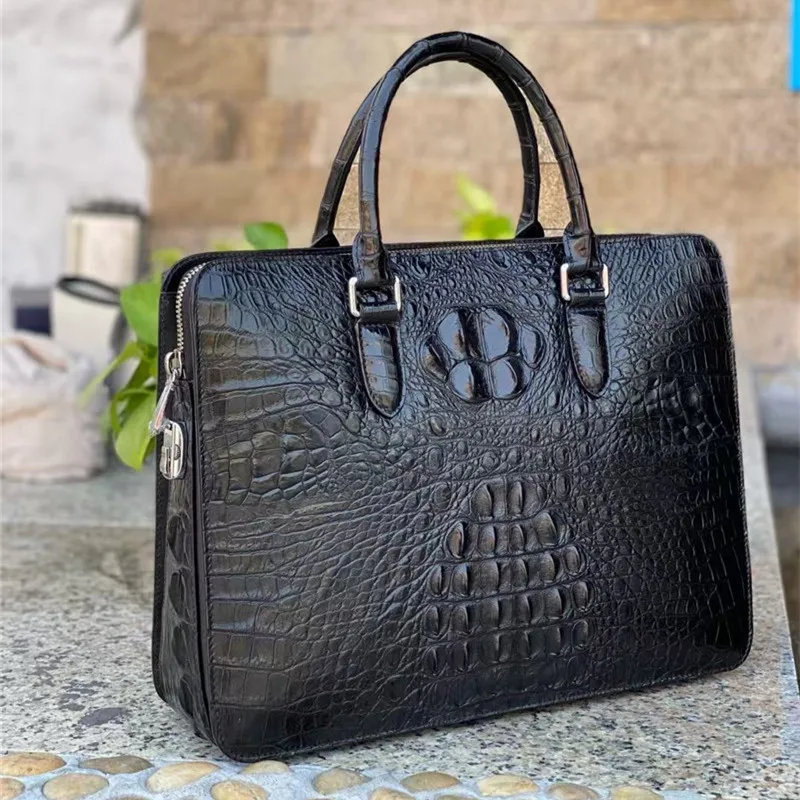
The Modern Briefcase: Adapting to Technology and Changing Work Culture
Today’s briefcase bears little internal resemblance to its ancestors, having undergone significant adaptation to accommodate digital work habits. Modern designs reflect a thoughtful balance between traditional appearance and contemporary functionality.
The most obvious evolution has been physical – briefcases have generally become slimmer and lighter as paper documents have been replaced by digital files. Where briefcases once needed to accommodate bulky file folders and numerous hard copies, they now prioritize electronic device protection and accessibility.
Key adaptations include:
- Dedicated laptop compartments with shock-absorbing padding
- Cable management systems that prevent tangles and damage
- Quick-access pockets for smartphones and other frequently used devices
- RFID-blocking compartments for protecting digital information
- Lighter materials that maintain professional appearance while reducing weight
- Attachment systems for securing briefcases to wheeled luggage while traveling
Despite increased remote work, the briefcase remains relevant by adapting to hybrid work environments. Modern professionals may work from multiple locations in a single day—home, office, coffee shop, client site—necessitating a mobile solution for technology and essential materials.
Understanding the best leather briefcases requires recognizing this evolution. Premium briefcases now combine traditional materials like full-grain leather with modern elements like ballistic nylon reinforcement or waterproof linings, creating pieces that honor tradition while embracing innovation.
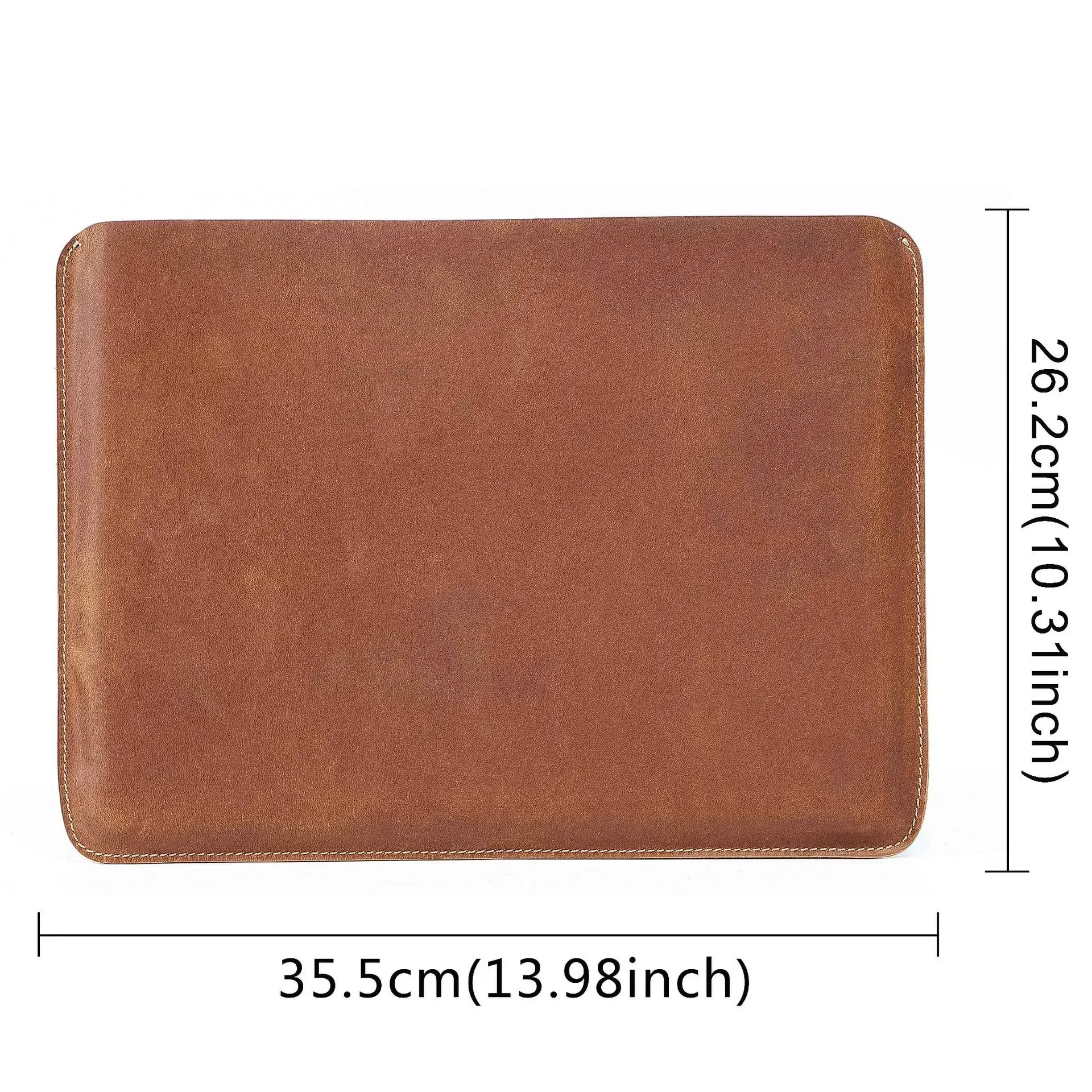
Industry-Specific Usage: Where Briefcases Remain Essential
While briefcase usage has declined in some sectors, certain professions continue to view them as essential tools rather than optional accessories. These industries maintain briefcase traditions due to specific functional requirements and professional expectations.
Legal Profession
Attorneys frequently handle confidential documents that require both organization and protection. Courtroom procedures often involve presenting physical documents, and the structured compartments of a briefcase allow for quick access to specific materials during proceedings. Additionally, legal professional standards often include formal dress and accessories, making briefcases a consistent element of courtroom appearance.
Finance and Banking
Financial professionals regularly transport sensitive client information and valuable documents. The security features of premium briefcases—including locking mechanisms and discreet exteriors—provide necessary protection. Additionally, client-facing finance roles typically maintain formal business attire standards where briefcases remain expected accessories for client meetings and presentations.
Executive Leadership
C-suite executives often use briefcases as part of a comprehensive professional image. Board meetings, stakeholder presentations, and high-level negotiations frequently involve both digital and physical materials that require organization and protection. The briefcase also serves as a visual reinforcement of authority and decision-making capacity in leadership contexts.
Government and Diplomacy
Diplomatic and governmental roles involve strict protocols where traditional accessories remain standard. Security concerns regarding sensitive information make structured, lockable briefcases practical necessities. The formality of international relations and governmental proceedings aligns with the classic professional appearance that briefcases provide.
Understanding how leather briefcases enhance professional appearance in these contexts explains their continued prominence. For document-heavy professions, specialized leather document bags provide particularly valuable organization systems designed around specific workflow requirements.
Alternatives to Traditional Briefcases: A Comparative Analysis
While briefcases maintain their position in many professional contexts, several alternatives have emerged to address different needs and preferences. Each option presents distinct advantages and limitations:
| Alternative | Advantages | Limitations | Best For |
|---|---|---|---|
| Messenger Bags | Casual appearance, hands-free carry, comfortable for commuting | Less structured organization, informal appearance | Creative fields, tech industry, younger professionals |
| Laptop Bags | Tech-focused protection, lightweight, modern appearance | Limited document capacity, often less professional appearance | IT professionals, frequent travelers, tech-centered roles |
| Business Backpacks | Ergonomic design, larger capacity, hands-free | Can appear too casual for formal settings, less accessible while wearing | Long commutes, back health concerns, carrying heavy equipment |
| Document Portfolios | Minimal, sleek appearance, lightweight, elegant for meetings | Very limited capacity, minimal protection | Short meetings, presentations, minimalist professionals |
| Hybrid Bags | Versatility, adaptability to different settings | May compromise on specific features, variable formality | Professionals with varying daily activities |
The rise of these alternatives reflects changing workplace norms and priorities. Younger professionals often prefer the casual functionality of messenger bags, while those with back concerns might choose ergonomic backpacks despite their less formal appearance.
For professionals seeking a middle ground, slim leather briefcases offer traditional professionalism with modern proportions. Similarly, leather messenger bags in premium materials can bridge the gap between casual comfort and professional appearance.
The choice ultimately depends on specific professional requirements, personal comfort priorities, and the image one wishes to project. Many professionals maintain multiple options, selecting different bags for various contexts—briefcases for client meetings and court appearances, messenger bags for daily office commutes, and portfolios for presentations.
Men's Classic Leather Briefcase, Slim Leather Laptop Briefcase, Slim Leather Portfolio Briefcase
$93.67 Select options This product has multiple variants. The options may be chosen on the product pageClassic Laptop Briefcase, Men's Classic Leather Briefcase, Slim Leather Attache Case
Price range: $353.50 through $360.81 Select options This product has multiple variants. The options may be chosen on the product pageBlack Leather Briefcase, Leather Document Bag, Men's Classic Leather Briefcase
Genuine Crocodile Leather Executive Briefcase with Password Lock – Premium Business Document Carrier$1,201.87 Select options This product has multiple variants. The options may be chosen on the product pageCanvas & Leather Messenger Bag, Leather Commuter Tote
$80.41 Select options This product has multiple variants. The options may be chosen on the product pageCrazy Horse Leather Satchel, Men's Leather Satchel, Men's Professional Leather Messenger, Vintage Style Messenger Bag
$132.70 Select options This product has multiple variants. The options may be chosen on the product pageBlack Leather Briefcase, Classic Laptop Briefcase, Men's Classic Leather Briefcase, Slim Leather Laptop Briefcase
$228.72 Select options This product has multiple variants. The options may be chosen on the product page
Selecting the Right Briefcase: Material, Style, and Functionality Considerations
Choosing a briefcase that serves both practical needs and professional image requirements involves several important considerations:
Material Options
- Full-grain leather: Highest quality, develops character over time, most durable but requires maintenance
- Top-grain leather: Balance of quality and price, more uniform appearance, good durability
- Synthetic options: Lower maintenance, often lighter weight, variety of finishes available
- Canvas/leather combinations: Casual but professional, lightweight, often more affordable
Style Variations
- Hard-sided: Maximum protection, structured appearance, maintains shape regardless of contents
- Soft-sided: Flexible capacity, often lighter weight, adaptable to different loads
- Classic designs: Timeless appearance, recognized professional signifier
- Contemporary styles: Modern interpretations with cleaner lines and minimalist hardware
Functionality Factors
- Size and capacity: Should accommodate daily essentials without excess bulk
- Weight when empty: Particularly important for commuters or frequent travelers
- Number and type of compartments: Organization aligned with specific professional needs
- Accessibility: Ease of reaching frequently used items without completely opening the bag
- Security features: Appropriate for the sensitivity of materials typically carried
When evaluating options, consider your typical daily items, commute method, and professional environment. A trial loading with your usual items can reveal whether a briefcase’s organization system aligns with your workflow needs.
Investment in quality pays dividends over time – premium materials age gracefully and maintain structural integrity through years of use. For many professionals, a well-made briefcase becomes more comfortable and characterized with age rather than deteriorating.
Black leather briefcases remain the most versatile choice for professionals working in traditional corporate environments, offering maximum compatibility with various outfits and settings. However, brown and burgundy options provide distinguished alternatives that still maintain professional standards.
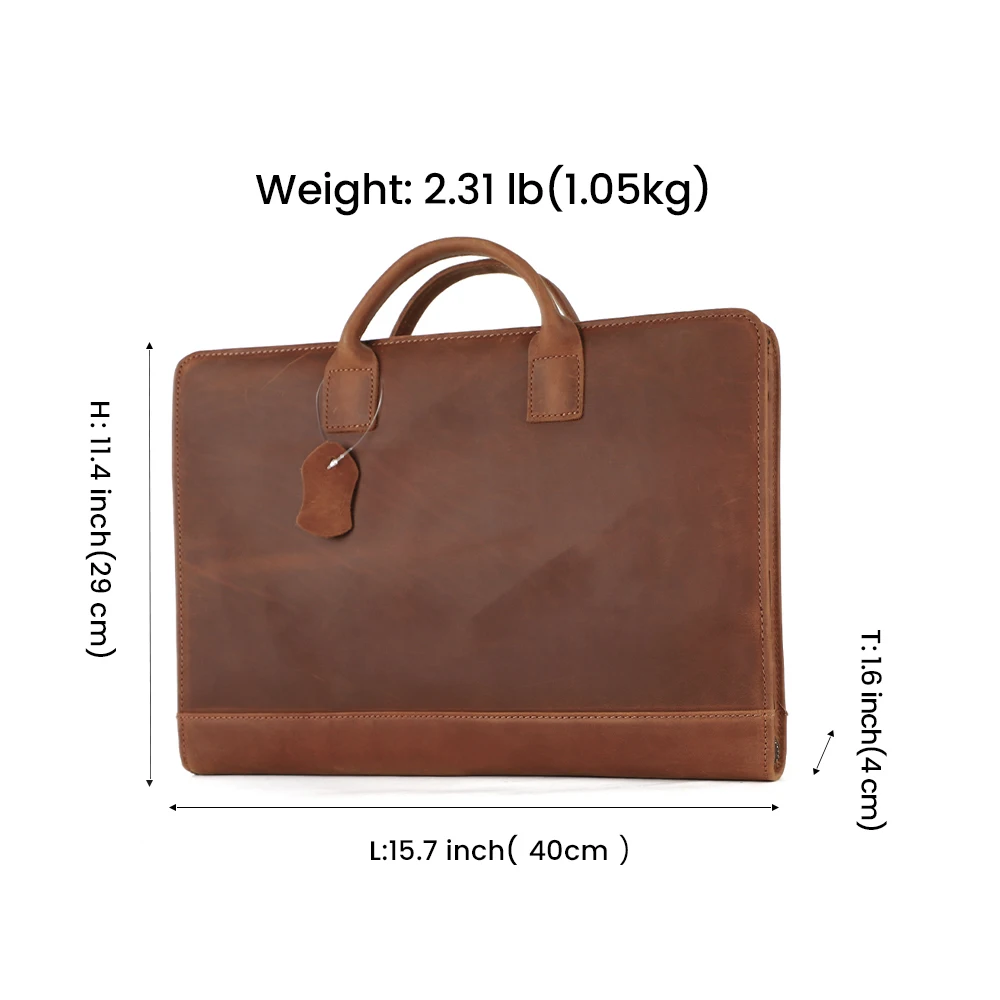
Do Businessmen Still Need Briefcases in a Digital World?
In an era of cloud storage, digital signatures, and remote work, do briefcases remain necessary tools or have they become purely symbolic accessories? The evidence suggests a nuanced reality.
Q: Haven’t digital tools eliminated the need for physical document transport?
A: While document digitization has reduced paper volume, most professionals still manage some physical items—notebooks, business cards, contracts requiring original signatures, and personal essentials. Additionally, electronics themselves require protection during transport.
Q: With casual work environments becoming more common, aren’t briefcases too formal?
A: Workplace formality varies significantly across industries and contexts. Client-facing roles often maintain higher formality standards than internal-only positions. Many professionals adapt by choosing more casual briefcase styles for everyday use while maintaining traditional options for formal meetings.
Q: Do younger professionals still value traditional accessories like briefcases?
A: Usage patterns show generational differences, but quality and functionality remain valued across age groups. Younger professionals often prefer hybrid designs or vegan leather briefcases that align with both practical needs and personal values while maintaining professional appearance.
Q: How has hybrid work affected briefcase usage?
A: Rather than eliminating the need for briefcases, hybrid work has transformed requirements. When visiting the office becomes occasional rather than daily, having an effective system to transport necessary materials becomes more important, not less.
The briefcase continues to evolve rather than disappear. Its endurance speaks to fundamental professional needs that transcend technological change—organization, protection, mobility, and credible self-presentation.
Beyond Function: The Briefcase as a Personal Statement
Beyond practical considerations and professional signals, briefcases often serve as expressions of individual style and values. The specific briefcase a person selects—its material, design, color, and details—communicates personal preferences and priorities.
For many professionals, a quality briefcase represents a meaningful investment in their career journey. Unlike disposable accessories, a well-crafted briefcase develops character over time, potentially accompanying its owner through career milestones and professional achievements.
Whether choosing classic leather that develops a unique patina or selecting sustainable materials that align with environmental values, the briefcase remains a subtle yet significant element of professional self-expression in a business world that continues to value both tradition and innovation.

